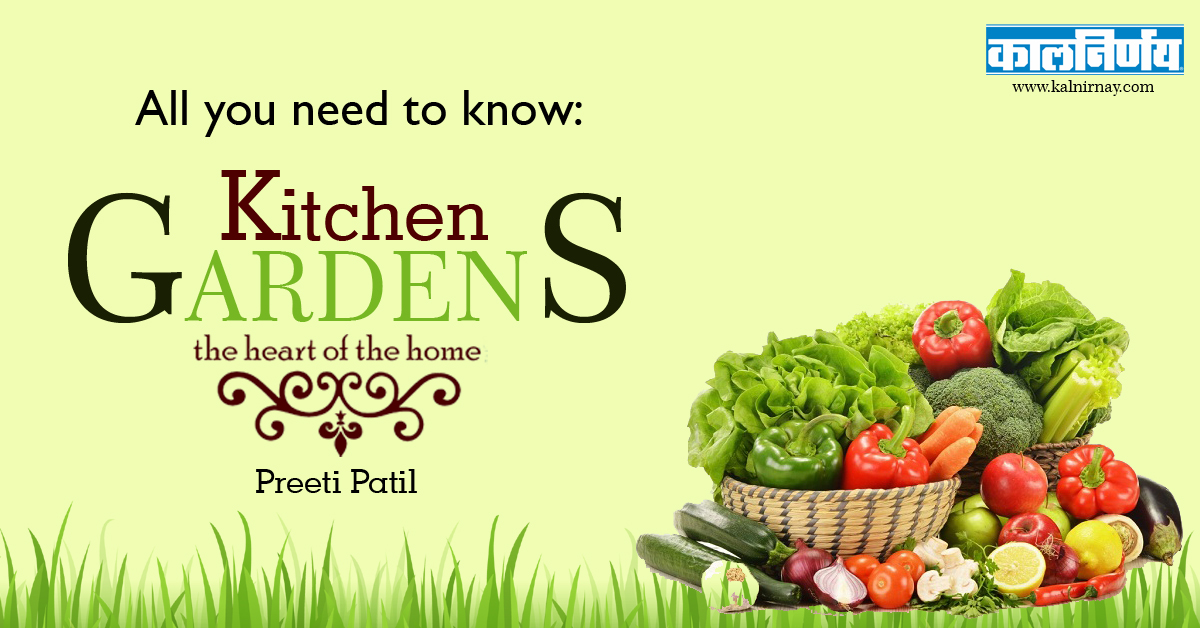Kitchen Gardens
‘Grow your own food’ is a movement that is fast gaining popularity across the world. Increased use of pesticides, climate change, the quality of food are a few reasons why people are exploring the possibility of growing their own food.
With a select few commercial crops that are grown throughout the year, we see less and less of traditionally grown, seasonal produce like mayalu, ambadi, shevga, peru, jaam, kamrak to name a few. These were grown in every backyard in villages and were a major source of nutrition for people. However, these days we rarely hear their names, leave alone eating and relishing them.
These backyard gardens are fast disappearing and we are losing touch with our rich agricultural biodiversity. Our country is blessed with a climate that is conducive to farming throughout the year. Although we live in compact, smaller homes today, it is still possible to grow some food on our windowsills and balconies. It may only fulfil part of our daily requirement but something is better than nothing! In cities, there are acres of land available on terraces which get abundant sunlight and can be used to grow our vegetables and fruits.
Just as our body needs healthy food and a clean environment, a plant needs healthy soil and effective environment. While starting your own garden, look into the following aspects:
- Selecting a site and garden design depending on available sunlight.
- Building soil or using compost with rich organic matter.
- Using non-hybrid, local and seasonal seeds.
- Keeping soil mulched always i.e. covered with dry leaves.
- Watering consistently and adequately at the same time every day.
- Pruning plant to maintain a good canopy shape.
- Care and maintenance for managing pests.
Most vegetables take about 3 months to start giving produce. Few of which can be easily grown at home and in a short period are :
- Spinach, fenugreek, amaranth, mint, coriander, mustard greens, lemongrass, green chillies, spring onions, garlic, basil, tulsi, curry leaves, radish, beetroot, corn, lady finger to name a few.
Beginners in gardening may use a mixture of vermicompost, red earth, and cocopeat in a ratio of 1:1:½ to grow their plants initially. However, one realizes with a time that soil purchased from nurseries is not necessarily the best medium for our plants to grow in. I believe in building my own soil, which we call Amrut Mitti. The process of
making Amrut Mitti and Amrut Jal is detailed on our blog www.urbanleaves.org.
Select containers to suit the size of the plant. Short rooted greens like spinach and fenugreek, spring onions, mint need wide containers and depth of about 8 inches. Radish and beet need depth of container to be at least 1 ft.
Initially use recycled containers. Drill holes at the bottom for good drainage.
Seed is very important in growing a healthy plant. Start with organic seeds from your kitchen cupboard like mustard, methi, chana, rotting onions. When u buy pudina from the market, keep one thick stem for rooting by keeping in a cup or vase filled with a little water (just enough to cover the base of the stalk). Change water every day. Wait a few days and it will develop roots. Once the root is developed it can be transplanted in a container. Lemongrass too can be rooted in a similar way and then transplanted. Next, try and source seeds from local gardening groups or farmer friends who have saved their own seeds. If none is available, buy local, seasonal and nonhybrid seeds from a local nursery.
Steps to sow seeds :
- Try and sow seeds 4 days before the full moon in the evening.
- Keep seeds in sunlight for a few hours to start warming up.
- Soak large sized-seeds in water for 5 hrs before sowing.
- Small seeds (like mustard) don’t need soaking.
- Sow seed
- Cover seed with soil — double the volume of seed.
- Keep in semi-shade.
Maintaining and caring for your plants :
- Water adequately without overwatering.
- Keep feeding your plants with matured compost made out of kitchen waste scraps at home.
- Check the underside of leaves regularly for pests and prune affected parts at an early stage.
It’s only when we grow our own food, do we begin to realize the poor state of our agricultural soil today, polluted with continuous use of pesticide and chemical fertilizers. We realize that traditional organic seeds saved by farmers have been lost to our generation due to the commercialization of few food crops, hybridization and now the looming threat of genetically engineered seeds which will not only wipe out our rich agro bio-diversity but place complete control of our seeds in the hands of few multinationals.
The range of packaged food available off the shelves in malls gives the current generation a false sense of security due to their advertising, which is misleading. These packaged foods, stripped of their nutrition while being processed, are addictive in nature and harmful to the body and our environment.
When children are exposed to gardening and growing food, they begin to realize how much effort goes into growing our food which we take for granted and learn to avoid wastage. They begin to understand soil and organisms and living in harmony with nature and her cycles, to be awed by the beauty and magic of a growing seed and its delicious produce, to relish the fruits of one’s labour.
Our true food security and safety lies in traditional wisdom and knowledge of seed saving, organically composted soil, taking care of our farm animals. We learn to revere and respect Mother Earth and to take care of her.

